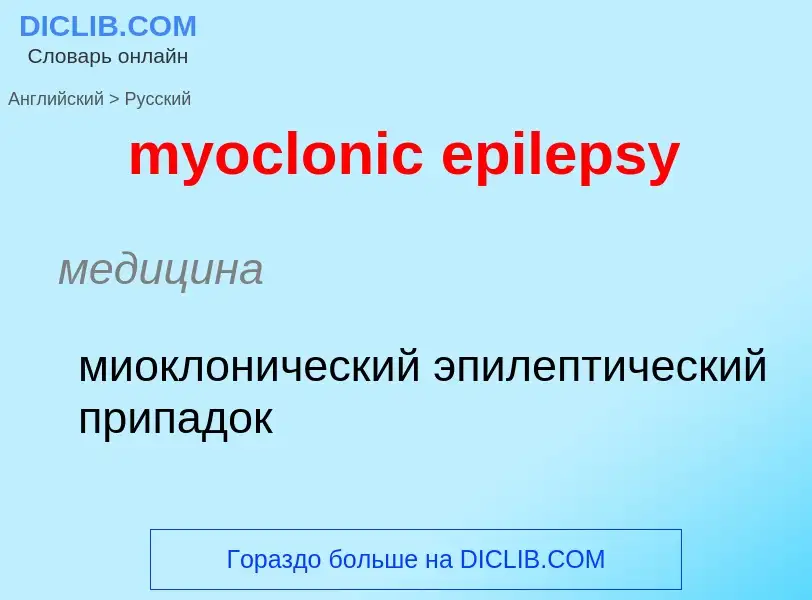Tradução e análise de palavras por inteligência artificial ChatGPT
Nesta página você pode obter uma análise detalhada de uma palavra ou frase, produzida usando a melhor tecnologia de inteligência artificial até o momento:
- como a palavra é usada
- frequência de uso
- é usado com mais frequência na fala oral ou escrita
- opções de tradução de palavras
- exemplos de uso (várias frases com tradução)
- etimologia
myoclonic epilepsy - tradução para russo
медицина
миоклонический эпилептический припадок
медицина
рефлекторный эпилептический припадок
рефлекторная эпилепсия
медицина
генерализованный эпилептический припадок
генерализованная эпилепсия
Wikipédia
Myoclonic epilepsy refers to a family of epilepsies that present with myoclonus. It starts in both sides of the body at once, and last for more than a second or two. When myoclonic jerks are occasionally associated with abnormal brain wave activity, it can be categorized as myoclonic seizure. If the abnormal brain wave activity is persistent and results from ongoing seizures, then a diagnosis of myoclonic epilepsy may be considered. Myoclonic seizures frequently occur in day-to-day life. During sleep, abrupt jerks and hiccups occurred.
Myoclonic jerks are typical without regularity. Myoclonus can be a source of substantial disability with impairment in daily activities. Myoclonus can be termed positive or negative, A sudden muscle contraction is known as "positive myoclonus," and a brief loss of muscular tone is known as "negative myoclonus". Myoclonus which occurred at rest indicates the source as a spinal or brainstem. Myoclonus which is action induced indicates the source as cortical. Focal and multifocal jerk which happened during voluntary action is an example of typical cortical myoclonus. Myoclonic seizures mostly can bee seen in people with generalized or genetic epilepsy. Because of its quick occurrence Myoclonic epilepsy some times can not be observed. Sometimes it is mistaken as tics or clumsiness. Myoclonic epilepsy of infancy is an infrequent disorder. 1% to 2% of childhood epilepsy are affected by myoclonic epilepsy of infancy. MEI happens frequently in the age group of 6 months to 2 years.


